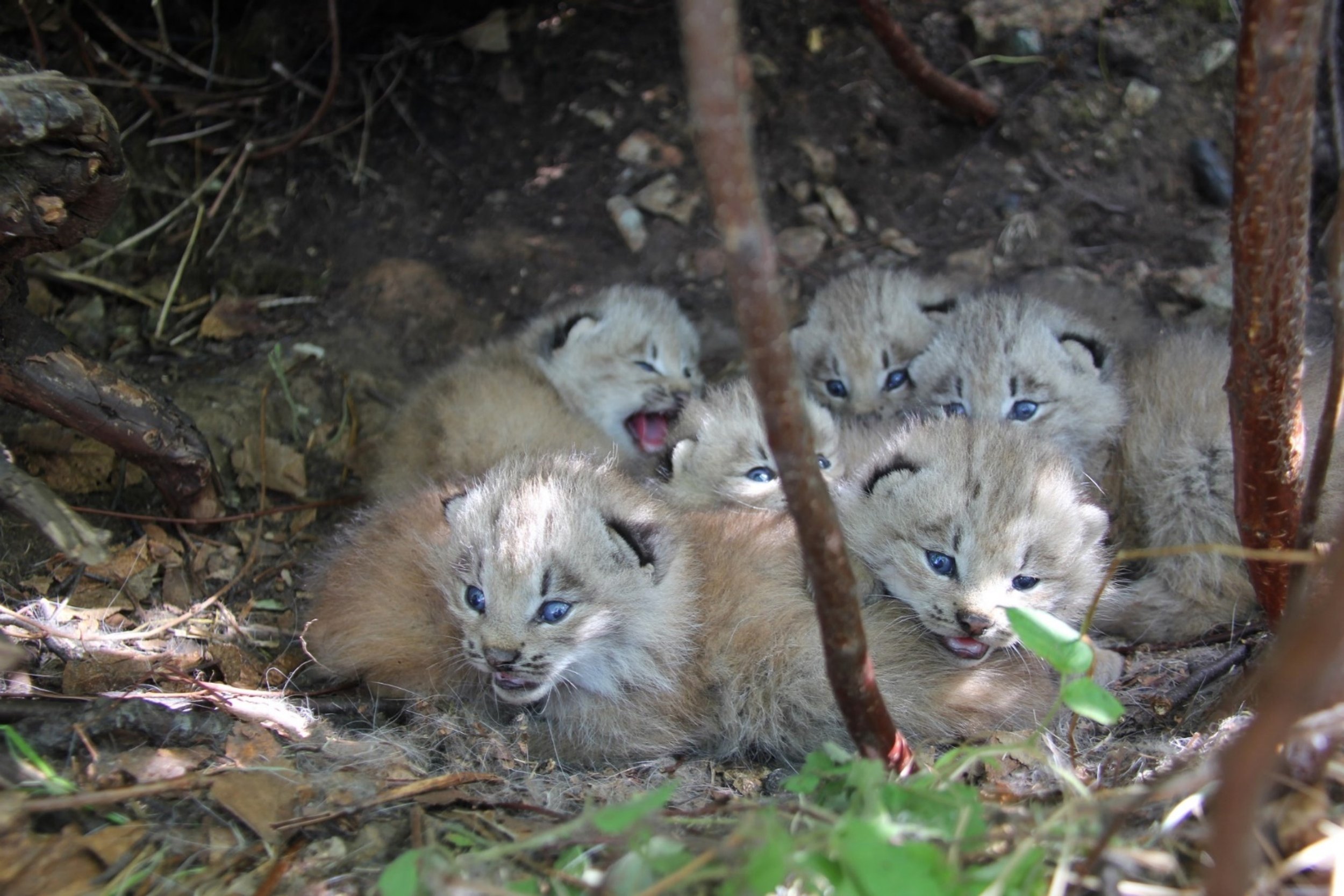Thesis Watch: Akashia Martinez, Biological Sciences
By Zeke Shomler
On Tuesday morning, February 28th, 2023, Akashia Martinez successfully defended her Biological Sciences M.S. thesis titled "Kit-rearing in the far north: Movement behavior and activity patterns of female Canada lynx (Lynx canadensis) during the denning season." Her study is part of the Northwest Boreal Forest Lynx Project, which combines efforts here at UAF with research from the National Park Service and U.S. Fish & Wildlife, with the overall goal of providing a better understanding of the relationship between two important species, Canada lynx and their favorite prey, snowshoe hares. Akashia’s impressively thorough work on movement behavior and activity pattern of denning mothers provides an important piece of the lynx-research puzzle.
Here at the Northern limits of Canada lynx’s range, which goes all the way across North America and down through Colorado, Akashia’s research focuses on the behavior of lynx mothers in the period from before birth until the kits leave the den around three months later. During her defense, Akashia explained that getting data about denning lynx at both extremes of their range is important for understanding and predicting lynx behavior—and so far, not many people have done this kind of research at this high latitude.
To be a little more precise, the lynx that she studied live up near Coldfoot, right about where the tree line ends. The land covers a wide range of altitudes, from the valley abundant in snowshoe hares, to the sparser, harsher mountains.
In many ways, Akashia’s project is the kind people dream about doing: she got to visit lynx out in the field, track them, collar them, and collect data. It’s hard not to get excited about a project when you see a lynx kit’s adorable face.
But the most impressive work doesn’t usually happen in the field where the lynx are; it happens right here, on computers. Akashia organized, analyzed, and made sense of, for lack of a better phrase, a whole lot of data from twenty-eight different individual lynx. This analysis, combined with her comprehensive knowledge of lynx behavior and ecology, creates a detailed picture of a Canada lynx’s kit-raising life in Alaska.
The twenty-eight lynx she studied were organized into three categories: males, denning females, and non-denning females. “Denning” means the lynx were observed having and raising young during the study period; “non-denning” means they didn’t have any kits. These lynx were fitted with telemetry collars, which send data about their location periodically—some once per hour, others every four hours.
Akashia’s project took a look at three years of data, comparing movement patterns at six different stages of denning. She made comparisons related to things like diel activity patterns (what times of day they tend to be active) and amount of time spent away from the den, comparing across categories like sex, litter size, and altitude.
One of the most exciting things, she said, was actually the relative unpredictability of these denning mother lynx. In general, the denning mothers behave pretty much the same before and after they have kits, but while they have young babies, they exhibit a lot of individual variation. She explains how that’s very likely related to the prey populations around, since lynx at higher altitudes, where there are fewer snowshoe hares, are behaving in ways better adapted to hunting prey like ptarmigan and grouse. The lower-altitude lynx moms have much more reliable access to their preferred prey, but that also means there are more predators around also looking to snack on small things—meaning more danger for their kits. In dens at higher altitudes, kits might be safer from predators, but it’s because there’s less high-value prey around. To complicate things further, Akashia found that mothers with small kits tend—quite logically—to stay close to their dens, so it’s important to pick a site that has a lot of prey around. It seems like each individual lynx mother has to make this trade-off when choosing how to raise her young—and they end up making wildly different decisions.
Akashia’s research not only helps us understand the behavior of denning Canada lynx and their relationship to prey populations; she also proved the applicability of remote methods for monitoring reproductive events in this species. Working remotely through these telemetry collars means fewer disturbances for the mother lynx—better conditions for her, less interruption of wildlife, and more accurate data.
Before starting this Master’s in Biological Sciences at UAF, Akashia graduated here with a B.S. in biology, focusing on ecology and evolutionary biology. She also did a minor in math—which proved helpful, given the detailed data analysis she conducted for this project—and participated in research looking at stable isotopes in sea birds.
Akashia ended her presentation by thanking those who have supported her, including her advisor Knut Kielland and her fiancé, Dakota. In the words of Dr. Kielland: “This is a gal who approaches science with great enthusiasm, but also great thought.” Akashia’s expertise, skills, and attention to detail will doubtlessly lead to an exciting and productive scientific career.






